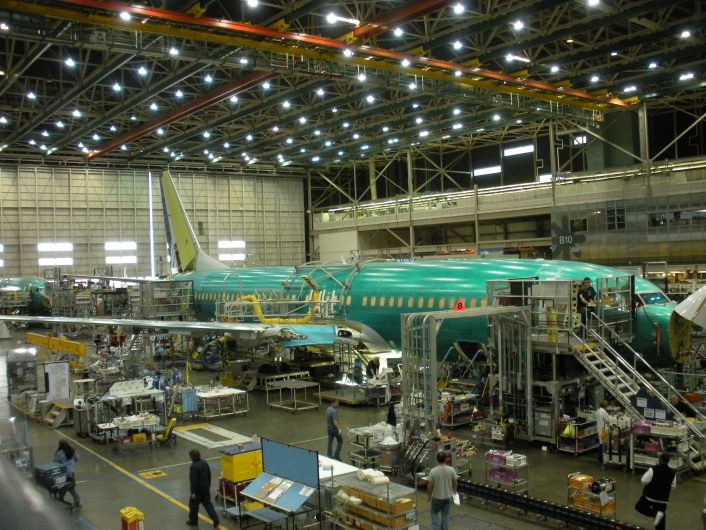Production challenges persist across key U.S. and allied defense programs despite post-pandemic recovery.
A recent event hosted by the Atlantic Council, a Washington, D.C.-based think tank, warned that supply chains of the aerospace and defense industry remain fragile despite gradual improvements since the pandemic.
The discussion, which was a part of the Council’s broader work on defense-industrial issues, featured executives from Samsung Electronics, RENK America, and Acutec Precision Aerospace, who outlined how lingering disruptions continue to impact the production across the defense industry. The warning comes as both the United States and Europe look to strengthen their defense manufacturing capabilities.
“Supply chain resilience has become a central test of industrial and national strength,” said Tressa Guenov, the director of programs and operations for the Atlantic Council’s Scowcroft Center for Strategy and Security. She noted that while the industry continues to recover from shocks during the COVID-era, decades of globalization and outsourcing have left U.S. defense manufacturing exposed to persistent vulnerabilities.
Persistent supply chain strain
Since the COVID-19 pandemic, aerospace and defense industry supply chains have faced major disruptions, and recovery has been slow. Steve Grundman, a Senior Fellow at the Atlantic Council’s Forward Defense Initiative and event moderator, pointed to a recent report by consultancy firm Roland Berger that found the severity of supply-chain disruptions had fallen from recent highs, but noted that in one instance severity levels had only improved by about four points.
The event’s panelists pointed to multiple factors behind the slow progress. Tariffs, trade tension, labor challenges, and stricter requirements for sourcing parts have complicated efforts to address vulnerabilities and strengthen supply chains. Ian Pain, the CEO of RENK America – a manufacturer of defense drivetrains and transmissions – added that increased European demand for military equipment following the Russian invasion of Ukraine has added strain to already stretched supply chains.
Elizabeth Smith, the president and CEO of Acutec Precision Aerospace – a manufacturer of components for the aerospace and defense industry that notably supplies parts for the Army’s Future Long-Range Assault Aircraft (FLRAA) program – said the industry’s instability long predated the pandemic and cited political turnover, poor supply chain communication, and delays of major commercial and defense programs that have intensified long-standing supply chain problems. Even as defense manufacturing ramps up, Smith said Acutec’s experience has been one of “endurance” and remains “very vulnerable.”

Delays and difficulties across key programs
This comment comes as the Army looks to accelerate the FLRAA program, with the first MV-75 prototype intended to be delivered by Bell in Fiscal Year 2027. As we reported in October, the Army and Bell worked with the MV-75’s supply base and subcontractors to reduce supply chain risks such as delays and cost overruns. Brig. Gen. David Phillips, the Program Executive Officer for Army Aviation, told Defense News that supply chain challenges pose the “highest risk” to accelerating delivery and fielding.
The emphasis by Pentagon officials on reducing supply-chain risks comes after several high-profile programs faced with setbacks tied to supply-chain bottlenecks in recent years.
The Air Force’s KC-46 Pegasus refueling aircraft has seen multiple notable pauses in production and delivery in recent years due to supplier issues. In February, Air Force officials halted deliveries and ordered a fleet-wide inspection after Boeing engineers discovered cracks in the aircraft’s aileron. Previous issues involving component and labor quality impacted production in the past.
Supply chain issues have further pushed back the introduction of the KC-46’s RVS 2.0 – a replacement of the aircraft’s faulty refueling system – by years. The KC-46 also continues to experience “prolonged maintenance repair times due to supply issues with parts,” according to a 2024 report by the Pentagon’s Director of Operational Test and Evaluation.
Lockheed Martin’s F-35 has been another notable system affected by supply chain vulnerabilities. A September report by the Government Accountability Office (GAO) found that deliveries of the fifth-generation aircraft were delayed on average by over seven months, while the completion of the Block 4 modernization program was delayed by five years and accumulated a $6 billion cost overrun. GAO cited supply chain challenges with the F-35’s TR-3 software and its Pratt & Whitney-produced F135 engines as key drivers of these impacts.
The most advanced 5th Gen aircraft in the world is getting even better. 📈
We’re rolling out new F-35s equipped with Tech Refresh 3 (TR-3) combat training capabilities, the first step in the F-35 Mission System avionics upgrade.
Up Next⏭️: Full TR-3 and Block 4 upgrades. pic.twitter.com/kizFtCzdOc
— F-35 Lightning II (@thef35) August 7, 2024
Industry adapts but challenges remain
Contractors and the government are continuing to make progress in addressing root causes of supply chain disruptions.
One method some companies have adopted is expanding and shifting manufacturing from risk-prone areas to the United States or to trusted allied nations. Cordell Hull, an Executive Vice President and Head of U.S. Public Affairs for Samsung Electronics America, pointed towards Samsung’s investments in U.S.-based semiconductor manufacturing – an integral part of many military systems – as a way spreading risk combined with “ally-shoring.”
Panelists also pointed to investments in risk-tracking analytics and workforce development as key steps toward improving supply-chain resilience. These moves align with the Pentagon’s broader efforts to reduce supply-chain vulnerability, which emphasize the adoption of best practices for information sharing, the use of advanced supply-chain analytics, and the proper elevation of risk across the defense industrial base.
To reduce risk exposure, some aerospace and defense manufacturers have begun direct steps to integrate critical suppliers. “You can’t subcontract your risk,” Pain said. “You own it.”
The approach mirrors Boeing’s recent reacquisition of Spirit AeroSystems, a global aerostructures manufacturer that Boeing spun off in 2005. Spirit, a critical supplier of parts for various civilian and military programs such as the P-8 Poseidon, KC-46, the B-21, and several Airbus aircraft, faced mounting pressure after a series of delivery delays and quality-control issues.

The 2024 Alaska Air Boeing 737 MAX 9 inflight door-plug blowout – a component manufactured by Spirit AeroSystems – intensified scrutiny and led to Boeing reintegrating the company to regain control over its production chain. In a related move Bell shifted production of the MV-75’s fuselage from Spirit to in-house due to the fallout.
Government action can also help absorb risk and stabilize production. Moderator Steve Grundman observed that Washington has also shifted its approach to strengthening the defense industrial base. He pointed out that Congress allocated $4.5 billion to capitalize the B-21 Raiders’ industrial base and speed up production. He further noted that when he served as Deputy Under Secretary of Defense for Industrial Affairs and Installations, he would “have been run out of government for suggesting such a thing.”
Grundman emphasized the national security implications behind supply chain resilience, calling it a “moral and business imperative to get ahead of the problem and solve it to secure the United States and its allies.”









